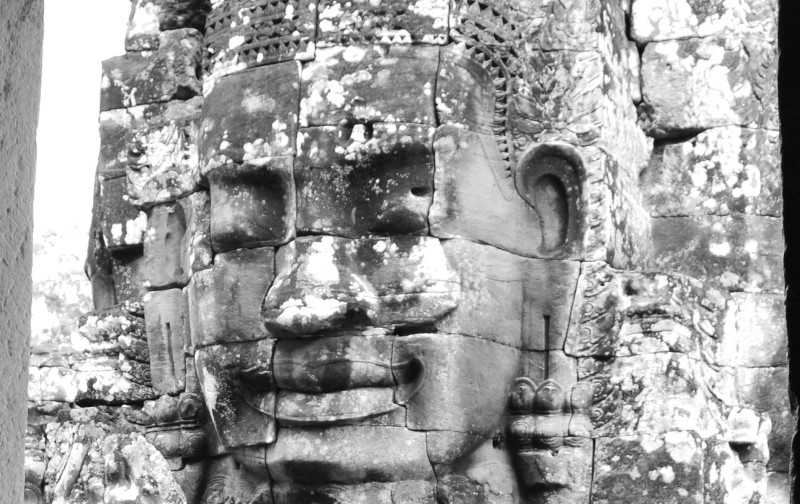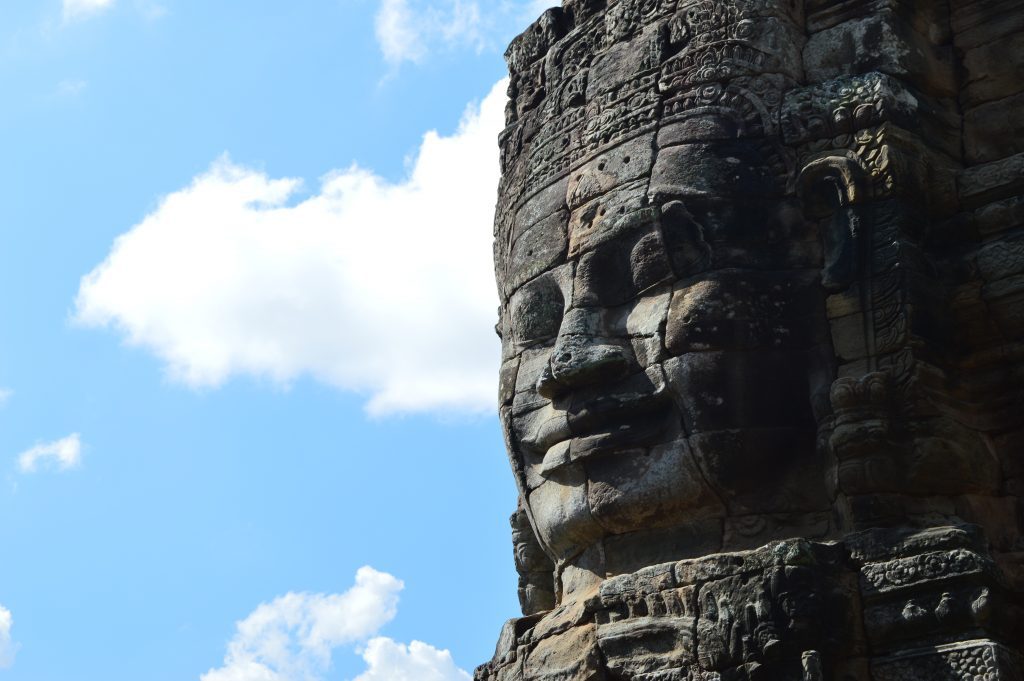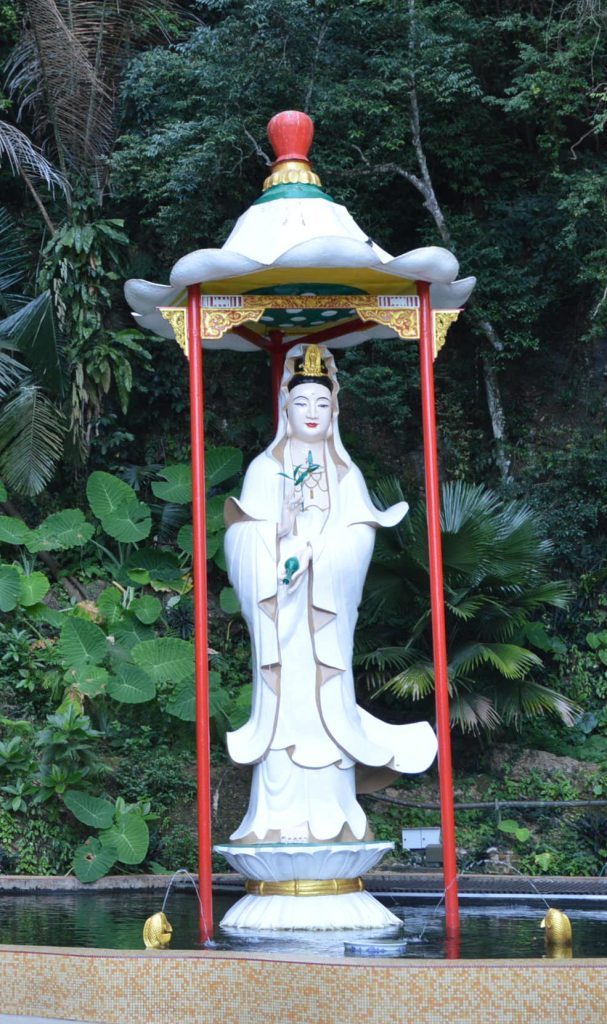Bodhisattvas Introduction
A Bodhisattva is a venerated figure in both Theravada and Mahayana Buddhism. The primary difference between these 2 main Buddhist schools is that attaining the level of full enlightenment (Buddha) is central to Theravada beliefs. However, the Bodhisattva is central to Mahayana Buddhism and obtaining the realm of the Buddha will happen in the distant future under the guidance of the Future Buddha – Maitreya.
The Buddha of the Future
Maitreya is known as the Buddha of the future. However, in the present he is still a Bodhisattva who is waiting in Tusita Buddhist Heaven for his time to come. The Maitreya Prophecy explains that he will return to the human realm in the distant future and achieve Buddhahood in a single lifetime.
In his time the sangha will have forgotten the Dharma teachings of Shakyamuni Buddha and fallen into severe disarray. Maitreya Bodhisattva will return and then lead all sentient life to enlightenment.
Therefore, Maitreya is a very important figure in Mahayana Buddhism and he has tremendous responsibility. Additionally, he is of great significance because he is similar to Siddhartha Gautama before he achieved Buddhahood. Siddhartha became the Buddha of the current era. However, he was lived thousands of Bodhisattva lifetimes before he achieved the ultimate goal.

Maitreya is very popular in China. The largest stone Buddha statue in the world represents Maitreya and it was completed in Leshan, China in 803 ACE. However, the project was initiated in 713 ACE and took nearly 100 years to complete.
The mastermind of this majestic Leshan Buddha Statue was a monk named Hai Tong. Hai Tong had great compassion and he endured great self sacrifice to ensure that the project was completed.
Incarnations of Maitreya – Chinese Buddhists believe that a monk named Budai or “Happy Buddha” is an incarnation of the Maitreya Bodhisattva. This incarnation of Maitreya was believed to have existed in China in the early 10th century ACE. His name means “cloth sack” in Chinese because he always carried a cloth sack over his shoulder filled with his few possessions. Budai is also seen as bringing good fortune and always carried treats for children in his sack.
Furthermore, Happy Buddha was very fat and this is how he is reflected in Buddha statues. He also is sometimes depicted with children climbing on his large body. Furthermore, it is thought that if you rub his belly it can bring you luck.
Avalokiteshvara Bodhisattva
Buddhists believe that the Bodhisattva Avalokiteshvara embodies the compassion of all the Buddhas. This is a tremendous amount of compassion for any one being to hold. As a result, Avalokiteshvara pledged to remain a Bodhisattva and continue working in the human realm until all sentient life was relieved from suffering. However, when the magnitude of this promise was fully realized Avalokiteshvara was said to have blown up into a thousand pieces.
The injury from the implosion was not fatal and Amitabha Buddha provided assistance by putting the pieces of Avalokiteshvara back together again. Although during the reconstruction Amitabha decided it would be prudent to make some improvements. As a result, he gave Avalokiteshvara 1000 arms and 11 heads. With many arms and heads Avalokiteshvara would be able to work much faster and also observe the suffering of sentient life much more efficiently.
The changing forms of the Bodhisattva is considered normal. In fact, in the Buddhist canon it is explained that a Bodhisattva can take the form of a male or female or any other form in order to relieve the suffering of sentient beings.
However, the way that the Bodhisattva is depicted in Buddhist art seems to be contingent on the geographical region and the school of Buddhist thought that is adhered to there. As a result, different cultures have adopted different interpretations about whether the Bodhisattva’s attributes are masculine or feminine. For example, it seems that conservative Theravada Buddhist countries have considered Avalokiteshvara to be male. However, in Mahayana Buddhist countries such as China, Japan and Korea the Bodhisattva is usually female.
Tibetan Chenrezig
In Tibet, Avalokiteshvara is called Chenrezig and he is depicted as masculine. Additionally, he is always depicted with multiple arms although not always multiple heads. Tibetan Buddhists believe that the Dalai Lama is a living incarnation of Avalokiteshvara.
Although Tibetan Buddhism is still practiced in Tibet, the 14th Dalai Lama was forced into exile in 1959 by the Chinese government. As a result, the Dalai Lama now resides in Dharamshala, India and the center of Tibetan Buddhism is no longer believed to be in Tibet.
Indeed, Tibetan Buddhism in Tibet went through tremendous changes in the 20th century. However, not all the changes are negative as the temporal living standards of the vast majority of Tibetans has greatly improved under a secular government.

Lokeshvara Bodhisattva
In Cambodia, Lokeshvara is a male Bodhisattva that is believed to be an embodiment of Avalokiteshvara. As a result, Buddha statues and paintings of him are overwhelmingly masculine.
At the Bayon Temple in ancient city of Angkor there can be found over 200 smiling faces of Lokeshvara that were constructed at the end of the 12th and early 13th century ACE.
Additionally, the iconic smiling faces of Lokeshvara are believed to be in the likeness of the ruler King Jayavarman VII who constructed the temple. The ancient Khmer rulers were known as “God Kings” as they were believed to be living incarnations of Hindu and Buddhist deities.
In ancient Cambodia the Khmer Empire would at times switch between Buddhism and Hinduism. As a result, there are remnants of both Buddhism and Hinduism at the Bayon complex. Indeed, Buddhism and Hinduism are closely related. Buddhism is the younger cousin of Hinduism and the foundation of Buddhism arose from Hinduism in ancient India.

Guanyin Bodhisattva
In China there is a very popular female Bodhisattva called Guanyin. She is widely believed by Chinese Buddhists to be an embodiment of Avalokiteshvara. However, since the Chinese believe that compassion is a female attribute, the depictions of the Bodhisattva are usually always female.
Additionally, Chinese Buddhists believe that an incarnation of Guanyin appeared in the 10th-11th century ACE as the Princess Miaoshan. It is interesting to note that some scholars believe the story has its origins in Taoism and not Buddhism.
Princess Miaoshan
Princess Miaoshan’s father was very demanding and when she came of age he ordered her to marry a wealthy man that he had chosen. However, the princess refused and would only agree to marry a man who could help to ease the suffering of sentient beings. When she suggested to her father that she be allowed to marry a doctor, he became enraged. As a result, (according to some versions of the story) the king ordered that the princess be executed.
On the day of her execution, the executioner was unable to end her life after many tries. Although she could have saved herself she knew the king would do something terrible to the executioner if she was still alive. Therefore, she allowed the executioner to take her life and she took all of his bad karma and replaced with it with her own good karma. As a result, upon her death she was condemned to a Hell realm because she had the bad karma of a murderer. However, she refused to be tormented and instead played music. The realm of torment was then transformed into a realm of heaven.

Tara Bodhisattva
Tara is female Bodhisattva that was born from a teardrop that fell from the eye of Avalokiteshvara. One day in ancient times, Avalokiteshvara was looking down from the Tibetan plateau to observe the suffering of all sentient life. As a result, a teardrop fell from the Bodhisattva’s left eye and Tara came to be at that moment.
Tara can be perceived in many ways. There is Green Tara, White Tara, Black Tara plus many others. Green Tara is depicted in Tibetan sculpture as always being prepared to spring to the aid of humanity. Additionally, Tara is commonly depicted with lotus flowers growing over her shoulders. Also, the hand mudras she uses display generosity and protection to all sentient life.
